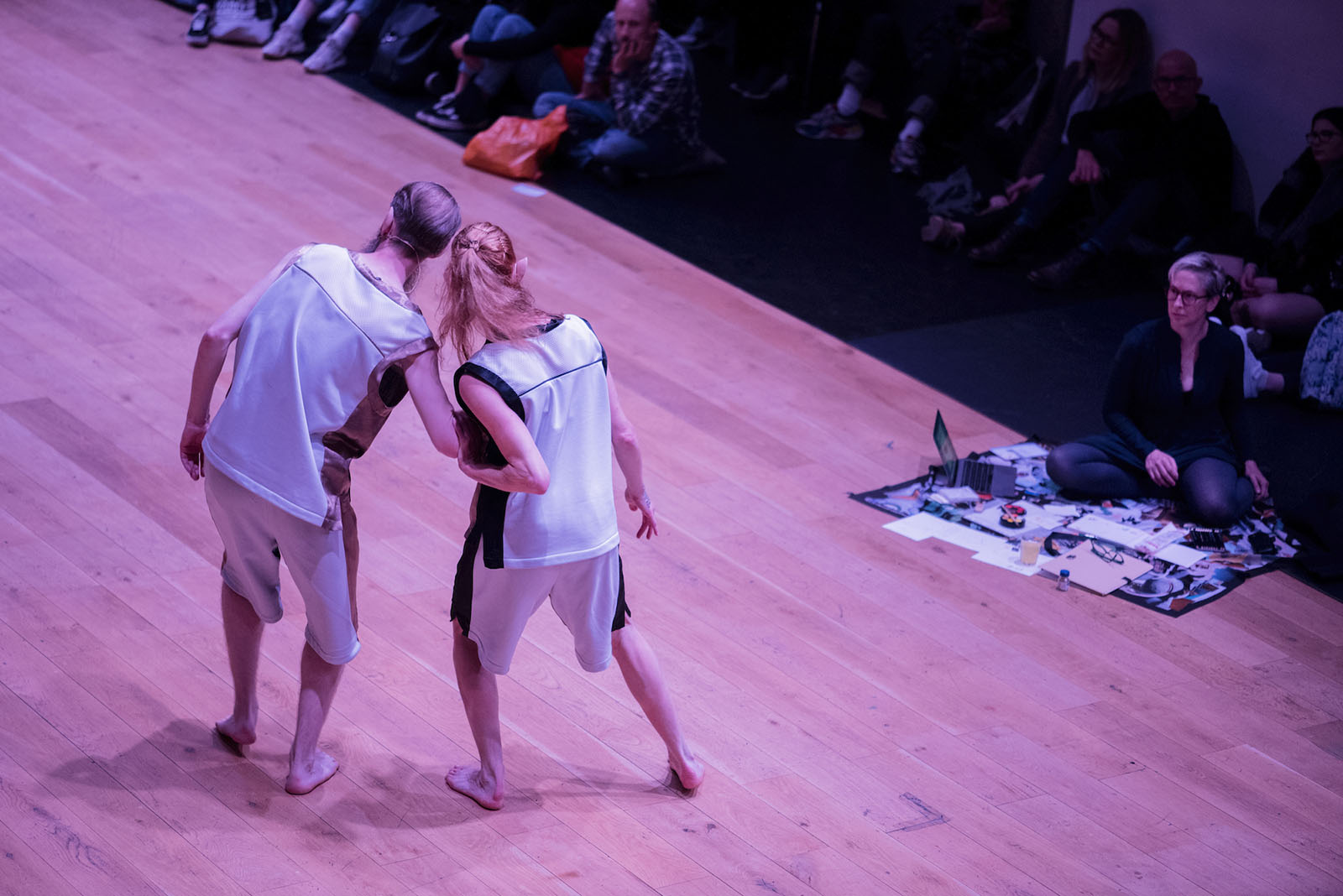Taking a reading

During my artistic doctoral research process and the creation of No-How Generator, I have evolved an increasing focus on taking a reading in/as choreographic practice, to characterise how I approach the relationship between choreography and embodied knowledge-generation.
This phrase articulates that my approach to choreographic practice is implicitly orientated toward and activated by taking an intuitive reading of my embodied experience while/as dancing. This orientation grounds my understanding of choreography as a practice whose every moment is implicitly engaged in generativity, knowing and learning – a space of learning-in-progress rather than exclusively a space of repetition and re-presentation of past learning.
Closely enmeshed with this, taking a reading also invokes associations with the divinatory and magical reading of palms, tarot cards, tea leaves… – a zone of connotations whose presence within the embodied actuality of choreographic performance I have become increasingly interested in over the course of this research, an interest also echoed in my engagement with Magic & Science as a choreographic epistemological orientation.
Rather than being a single choreographic material, taking a reading is, for me, a broader approach toward the choreographic materials and choreographic performance in this research: all of the different choreographic materials that make up the sequence of the choreographic score of No-How Generator are forms of engaging in taking a reading.
Other than the prior communication of the title of the work itself, taking a reading is the only language from the work’s choreographic score that is directly named and shared with audiences during the performance of No-How Generator: in welcoming the audience as we begin, my co-performer Katye Coe and I verbally introduce our guest performer to the audience, with Coe saying that the guest ‘is taking a reading this evening, of a kind. Us too, and all of you’ (Coe’s performance in Sperling 2019). This aims to introduce, into the space of the performance, the shared awareness that taking a reading is the orientation that we, as performers, are engaging, and that we invite the audience to also engage with and consider.
Choreographer and dance artist Jennifer Lacey, who has been a guest performer in No-How Generator, has spoken of what the choreographic field learns from engaging with divination-like practices, saying (I paraphrase): ‘These kinds of activities are also ways in which we (as artists) develop skills of perceiving how sense is made in dance contexts, for ourselves and for others, and to learn how (and how much) we might provide that for others as audience’ (Lacey 2019). With this insight, Lacey focuses an understanding of how and why taking a reading and connotations of divination have an integral relevance to and connection with choreographic practices: they engage practice-grounded, more-than-rational approaches to investigating how the generation of the intelligible within the sensorial occurs in dance and choreography.
READ MORE in Section 6 of my written thesis on Taking a reading: invoking choreographic connotations of divination